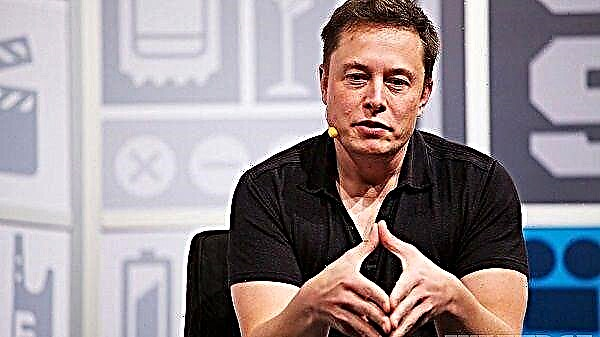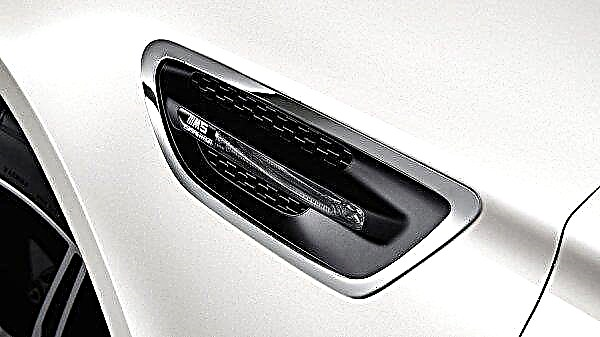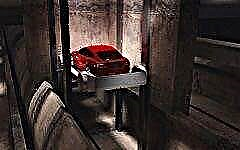

The content of the article:
- Elon Musk and his ideas
- The Boring Company project
- The principle of operation of underground roads
- Difficulties in the development process
- How real is Elon Musk's idea
Who among motorists at least once in his life has not dreamed of a magical road along which you can get to your destination in an extremely short time, bypassing city traffic jams, pedestrian crossings and idle at traffic lights? But such roads exist only in films about the future, and even then not in all. However, one of the famous inventors of our time is confident that he will be able to create the roads of the future in the present.
Elon Musk and his ideas

Elon Musk is an investor, shareholder, engineer, founder of several companies, inventor and, according to some publications, a famous playboy. It was Musk who founded the PayPal payment system (which he later sold) and SpaceX, a company that develops reusable launch vehicles.
But the greatest interest in this case is represented by Tesla Motors, which began its existence in 2003. Tesla Inc. is developing next-generation electric vehicles and has achieved impressive results in the industry with several product variants. And although the first car released in 2008 was not perfect (it suffered a fiasco during testing on talk shows), work did not stop. And expectations were justified - the next model gained wide popularity, despite the impressive cost.
Building electric cars is probably Musk's most practical idea. Others do not differ in such down-to-earthness; rather, the definitions of "scale" and "fantastic" are suitable for them. In one of his last speeches, Elon said that he was going to work on sending people to Mars and creating a network of underground highways.
The Boring Company project

During a TED conference in Vancouver, Musk made a statement that he was going to work on the development of highways located underground. According to him, such a communication system will help fight traffic jams and significantly speed up the movement of cars.
It should be noted that the idea of developing a kind of "automobile metro" looks quite reasonable. The car will be able to move off the road onto a special lift pallet and, having descended on it into the underground space, go to the destination point along the laid line. The laying of several such routes along certain routes is quite real and does not cause serious doubts about its design.
But Musk, while remaining true to his inherent scope, does not recognize such half-measures. His plans go much, much further.
The inventor is planning not only to create underground roads, he wants to build a full-fledged network of tunnels that are not much inferior (and maybe not inferior at all) to ground roads. Musk is confident that it is quite possible to create tunnels-roads in 30 tiers, through which cars can move at a speed of at least 200 km / h.
To implement this idea, Elon founded a project called The Boring Company, which is led by Steve Davis, who is the chief engineer of SpaceX. At this stage, a minimum amount of time is devoted to development, and the bulk of the specialists involved in the project work freelance. However, the project is far from being frozen and, albeit slowly, is progressing.
The principle of operation of underground roads

The system itself is simple. To use the underground tunnel, the car must move into a specially equipped lane, where it can fit on a metal platform module. After that, the module is lowered underground with the help of a lifting mechanism and, together with the car on it, sets off along the side line, which later flows into the main stream. The principle of operation is similar to that of railways.
When the machine reaches its destination, the module enters the lift again, which lifts it to the surface. After that, the car continues to move along the usual road, and another car takes its place on the module.
In addition to the vehicle platform modules, the company plans to develop closed modules in which people can be transported according to the same principle.
The movement of the modules takes place with the help of electrical energy and is completely silent. The developers assure that residents of houses located above the passing highway will not feel any discomfort.
Such a communication system seems in many ways impracticable, however, Musk's company is not only working on this idea theoretically, but also starting work on the construction of the first road of a new type. So far, the tunnel is being created on the territory of the company and, as Elon said half-jokingly on his Twitter, it starts under his desk.
According to some reports, the tunnel will have to lead to the local airport, but this information is controversial. As long as the work does not go beyond the territory of the company, the owners can do what they want, but outside of it they will have to get permission to create a tunnel. And in order to convince the authorities to allow the installation of such a structure, just a good idea is not enough. We'll have to work on the practical side of the issue.
Difficulties in the development process

At the TED conference, the head of SpaceX outlined three major challenges the development team faced.
1. Cost of construction
Even an ordinary metro line requires billions of dollars for its construction, but the arrangement of modules, power supply and other technologies implies additional costs. However, Musk found a way out of the situation. He decided to narrow the tunnel from the regulated 8 meters to 3.6 meters. According to him, such a narrowing can cut costs by at least 10 times. In this case, this is quite possible, since such a tunnel width will be quite enough for the movement of a single stream of cars.
2. Slow drilling process
The very digging of the tunnel takes at most a couple of hours a day, the rest of the time is spent on strengthening the created section. Ilona, of course, is not happy with this state of affairs. He mentioned that he is going to develop an improved technology for drilling tunnels, in which it will be possible to carry out excavation and reinforcement works in parallel with each other.
3. Organization of entry / exit to the underground roadway
This issue is also being dealt with by the project participants. Their goal is to simplify the process as much as possible and save space. Musk expects to equip the entry points so that they occupy no more than two parking spaces.
How real is Elon Musk's idea

Still, the idea of underground roads raises too many questions. The author speaks of 30-tiered highways, but such a design in our time is more likely to be a fantasy.
Even to rebuild 10 tiers of underground tunnels with a length of several tens of kilometers is almost unrealistic in our time. And if from a technical point of view this is still possible, then the material costs will be problematic to cover. But Musk is considering the issue of creating a full-fledged automobile network, stretching for many hundreds and even thousands of kilometers.
Highways will have to maneuver between communication tunnels, metro lines (they will have to be additionally strengthened if another tunnel is drilled near or below), building piles (some of them lie quite deep), etc.Plus, one should not discount the features of the soil, its bearing capacity and the load of urban structures on the earth layer. We'll have to work on ways to strengthen the tunnels.
And of course, it is worth thinking about what will happen to the city, the underground part of which is pitted with passages of 30 tiers during natural disasters - earthquakes, floods, etc. "Burrows"? And how to protect the "holes" themselves from flooding and blockages? After all, getting out of any flooded / littered tier with the car does not seem real. Even the metro is dangerous in such a situation, although it has spacious exits and is not so deep underground. I wonder why Musk didn't mention working on this part of his idea?
Well, secondary details raise many questions. For example, how will the places with submersible modules be equipped? And what will happen when the site with the car goes down? Will another immediately take its place? Or will you have to wait until someone arrives at this point, as shown in the video?
At the same time it will be interesting to know how it is supposed to "dose" the number of cars in the queue to the module. After all, the idea for creating such a method of communication was traffic jams, which gave Elon Musk a lot of unpleasant moments, which he announced on his Twitter along with the decision to create underground highways. Perhaps, with their help, it will really be possible to reduce the number of congestion at intersections due to the fact that congestion will form in the queue to the modules. Or will the number of cars be controlled somehow?
There are indeed a lot of questions, there are even more flaws, but the idea itself has every right to exist and develop. Of course, the developed 30-tiered network throughout Los Angeles does not differ in realism, at least in the near future it will definitely not work to create something like that. But the construction of several lines connecting the most popular points of the city (for example, an airport, a hotel, entertainment places, the business part of the city, etc.) seems to be quite possible.
Conclusion on underground transport tunnels
How real is Musk's idea? Now it seems like something from the realm of fantasy and it really is. But the question is, what will technology be capable of in a few decades? And after a hundred? The idea of autotunnels can be brought to life even now, on a smaller scale, of course. But what can be done with it in 50 years?
Henry Ford's contemporaries could hardly have imagined that time, followers and technologies would turn his self-propelled carriage into multi-ton tractors and racing cars. But…











